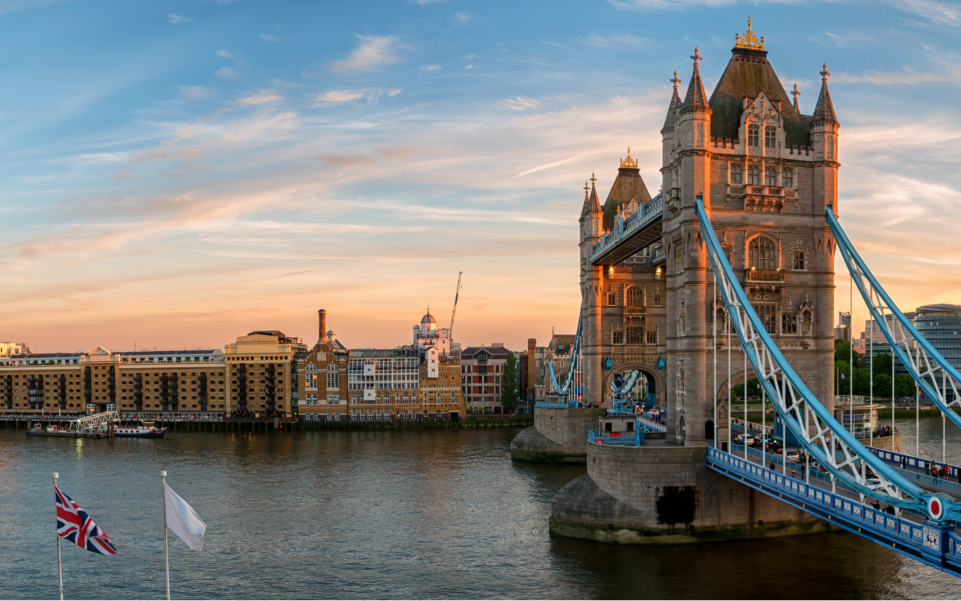Interesting facts about England

One of the most attractive locations for many tourists is England. It is a country with a centuries-old history reflected in the preserved medieval castles. Centuries-old traditions and rich culture, breathtaking nature with endless sea coasts, special atmosphere of provinces and full of dynamics life of big cities — all this has put its unique imprint on the special traditional way of life of the English. Travellers, and especially those who want to move and become a part of England and its society, will be very useful to know some interesting facts about this unique place on the map of Great Britain. So we suggest you make a cup of tea and immerse yourself in the English flavour.
About history and traditions
We’ll start by talking about historical traditions and customs.
Name
Before the Roman invasion in 55 BC, the island was inhabited by Celts who called themselves Britons. But the name of the country was given, strangely enough, by the Germans. In the sixth century AD, Germanic tribes settled on the territory of the then unnamed island. One of them was called the Angles.
Together with them, the island was settled by the arriving Germanic tribes of Saxons and Jutes, but it was the Angles who gave the island its name.
The English are often also called Anglo-Saxons, but this name is used more in relation to the inhabitants of other English-speaking countries: America, Canada, Australia, New Zealand.
Notoriety
The Angles first came to prominence in 98 AD, thanks to Tacitus. He mentions them in his work “Germany” and speaks of them as a remote tribe in East Germany.
Stonehenge
Stonehenge in Wiltshire is probably the most important proof of the antiquity of English history. It was created around 2500 BC and there have been many mysteries and riddles surrounding this ancient monument throughout its existence. The interest in this place has not waned for centuries. The impressively sized circle of stone structures is believed by some to be nothing more than a place of cult rituals of the distant ancestors of the English.
The first King
The first officially proclaimed and recognised ruler in England was Alfred the Great, who took the title of King. He united all the tribes into a single entity and through his efforts a state with its own army, navy and unified administration emerged.
Traditions and customs
Some of them are based on the once customary way of life, specifics of climate, ancient rites, while others characterised the way of entertainment and recreation.
As an example, the so-called “Guy Fawkes Night”, when the British go out on the night of 5 November, shouting, burn an effigy of a man and merrily launch fireworks into the night sky.
It turns out that this tradition has deep roots, namely, it is based on an episode in English history. In the early 17th century, one of those who would now be called an oppositionist, Guy Fawkes, tried to blow up Parliament. The attempt failed, so Guy, as well as his associates, was sentenced to death by hanging, gutting and quartering.
It is not quite clear in what order the authorities were going to execute the sentence, but the hero of the holiday “spoilt” the fun by jumping off the scaffold with a noose around his neck, thus sparing himself from the subsequent stages of execution.
There are many unusual, strange and sometimes curious traditions in England. Here are just a few of them.
Throwing cheese and buns
For example, the people of Gloucestershire climb a hill every spring to throw a head of cheese from the top of it and chase after it with laughter and hooting. This is how they celebrate the coming of spring. The winner of this unusual competition is the one who can catch up with the cheese before it rolls to the bottom of the ravine at the foot of the hill.
The English themselves call these competitions “cheese races”. This strange tradition is based on a pagan rite. In the process, a large burnt ball of brushwood was rolled down the mountain. According to the English ancestors, this was to symbolise the beginning of the new year.
There are other equally interesting English traditions. One of them is bun throwing in Oxfordshire. The mayor of Abingdon is in charge of this unusual action, throwing buns with sultanas, icing and sweet fillings into the crowd from one of the towers of the town’s castle. Hundreds of locals and visitors gather to watch and participate. It is believed that good luck awaits the one who catches the bun. This tradition was not born from nothing. Once upon a time, when kings in England were not nominal rulers, the mayor of this city made it a rule to climb the tower of the city castle on the days of royal celebrations and throw bread to the poor residents.
Dancing around the pole
Another cultural tradition called “Dancing Maurice” is also amazing. This event takes place in May. People dressed in unusual outfits, hats decorated with fresh flowers, with bells and ribbons on their clothes, with chains and sticks with bells in their hands, dance around the May pole. This tradition dates back to antiquity. This tradition dates back to the celebration of Easter, when they danced around the May tree.
Talent in your face
Even more amusing and unusual is the English tradition of a wiggle contest. It is called “gurning” and absolutely everyone can take part in it. This tradition originated in ancient times. In the 13th century, the owner of Egremont Manor, Thomas Moulton, to whom his vassals brought baskets of fruit and vegetables as tribute, decided to organise a fair to celebrate the end of the harvest. The generous lord decided to distribute some of the apple crop to his vassals. But they didn’t like the produce of the orchards very much. Or rather, they didn’t like it at all. Everyone who tasted the apples waved his face in an amused grimace when he tasted the sharp acidity. This amused the people watching. It was then decided to celebrate a wiggle day on fair days, which later turned into a kind of competition.
Some have managed to see the benefits of this tradition as well, believing that it has its positive aspects:
- It’s funny after all, and therefore good for your health, as laughter is known to prolong life;
- Becoming a winner, even in such a strange competition, means drawing attention to yourself, gaining more self-confidence;
- In preparation for the competition, its participants train their facial muscles;
- It’s also a lucrative business. For all its uniqueness, this competition has many sponsors.
Army and Navy Laws
The facts about Great Britain confirm that it is conservative in everything. The army and navy, which have centuries of tradition, are no exception.
Red uniforms
For more than three hundred years the British army has not abandoned the red uniforms. Although the army now wears khaki-coloured uniforms, the tradition has survived: soldiers and officers serving in His Majesty’s Guards Cavalry Regiment continue to wear the famous red uniforms.
The history of the origin of red uniforms begins in the 17th century, when the regular army began to form. The red colour of uniforms is explained simply. The uniforms of line infantry soldiers (they were the first to wear such uniforms) were painted in the colour whose dye was cheaper than the others.
Bear hats
The tradition of wearing tall hats made of bearskin is a privilege of the royal guards. It came about after the victory over the French at the Battle of Waterloo. English soldiers collecting trophies from the battlefield liked the fur hats of the French soldiers very much.
A curious detail: hats for Guardsmen are sewn from the skins of Canadian grizzlies. The height of each must strictly correspond to 46 centimetres and the weight to 4 kilograms.
Selection by place of residence
Another tradition in the British Army, unusual for many military formations of the world, is the recruitment of regiments. The peculiarity is that recruitment to military formations is carried out in certain regions, towns and districts of the country. This tradition is strictly observed to this day. So strengthen the team spirit. This is why, for example, the Argyll and Sutherland regiments are made up entirely of Scots, and Welsh people serve in the Welsh Guards.
The symbol of victory is the Kashmiri goat
The history of military units in the army is not only the official documentary statistics of battles, but also a list of events in which they participated. Almost every military unit has its own military artefacts.
For example, the landmark of the Prince of Wales’s Staffordshire Regiment was at one time a bull terrier-mascot. It was a gift to the regiment from the municipality of Burton-on-Trent, whose mayor presented it to the commander in 1949. A sort of living mascot of the regiment, named Watchman I, together with his “fellow soldiers”, in a uniform specially made for him, was an escort of King George VI during his journey through England.
The tradition of having bull terriers in the regiment has been maintained to this day. In the Welsh Fusiliers, the Kashmir goat became a symbol of victory and became a full-fledged unit of the regiment. The goat, which was promoted to the rank of Corporal, was named William Windsor.
The animal became a living symbol after an incident that occurred during a battle between the British and the Americans fighting for independence in 1775. Once between the ranks of the enemy, the goat at one point darted towards the Americans, drawing the British soldiers away with his bravery.
Since then, in succession, the ranks of the fusiliers are invariably replenished with new goats. They are obligatory participants of ceremonial dinners in the regiment’s officers’ assembly and all official events. A special “shepherd” is assigned to the animal, who is officially called the “goat major”.
It should be particularly noted that one of the last Kashmiri goats was presented to the fusiliers by Queen Elizabeth II instead of the previous one, who had left on term of service.
Laws
In England, as some legal scholars have estimated, dozens of new laws are passed every year. We do not venture to say which of them may seem strange to the average person, but out of the vast number of those previously enacted, there are many that would cause the modern person at least some surprise.
The law on sleeping cattle
A law passed back in 1867, according to which it is forbidden to drive cattle through the city streets at certain hours, is still in force. It is not clear how this is even possible in the conditions of modern traffic in cities. Moreover, in 1980 another, no less strange law was adopted. In no case should sleeping cattle be left on the roadside.
The beard is off-limits
In the 16th century, by law, all English men who wore beards paid a tax for this “privilege”. The reason for such a tax is trivial. The English king Henry VIII only wanted to replenish the treasury. The law existed for some time and was safely forgotten, but Elizabeth I, who came to the throne, unexpectedly renewed it.
First to the King, then to myself
In 1322, a law was promulgated that strictly required English fishermen to offer all caught whales and sturgeons to the reigning monarch beforehand. An English fisherman who offered a sturgeon caught from the river to the Queen of England for the sake of interest was convinced that the law was still in force. The surprising thing is that it was taken for granted. Her Majesty thanked the lucky fisherman and allowed him to dispose of the catch as he saw fit.
Only sober people in the bar!
There is a curious law that appeared in the 19th century and is still in force today. It is a law prohibiting drunken people from being in a bar. How this is possible exactly in a bar, not every sober person will answer. If you follow the letter of the law, anyone who comes to a bar and drinks at least a mug of beer can be fined a decent amount of money.
Questions and answers on English traditions and customs
What's the usual menu for the English at Christmas?
In the Middle Ages, a wild boar’s head roasted over a fire was served on Christmas Day. The English nobility could afford to eat roasted peacocks and other birds on Christmas Day.
Nowadays, the average Englishman has an oven-roasted turkey with various sauces on his table. Some people prefer roast geese or beef wellington.
Fat Tuesday — what kind of holiday is it?
Another name for this feast is “Penitential Day”. It is celebrated before the beginning of Lent. On this day, the English eat pancakes that are sprinkled with various syrups.
When does the work of Parliament begin?
The opening of Parliament is an elaborate and solemn ceremony that takes place in autumn. Every action during the opening is a real ritual, approved many centuries ago.
Traditionally, halberdiers are sure to search the basements of the Palace of Westminster with lanterns in the hope of finding conspirators hiding there.
The monarch arrives at the palace by carriage (necessarily accompanied and guarded by a mounted royal guard).
On the steps of Westminster the reigning king is met, holding a long wooden rod, by the Lord Grand Chamberlain and a heraldmeister carrying a cane on one shoulder, who, shouting on the way, “Hats off!”, escort the monarch to the throne in the Hall of Parliament.
The Guildmaster, who comes to the House of Commons, formally announces to the MPs that they may attend and listen to the King/Queen’s speech.
Which is the most important holiday for the English?
Christmas. Preparations for Christmas begin months in advance. Already in autumn, Christmas goods start to appear in the shops. At Christmas itself, the British usually give each other Christmas cards. An interesting observation: more than three billion cards are sold each year.
In London, a Christmas tree delivered from Norway (also an old tradition) is set up in Trafalgar Square.




